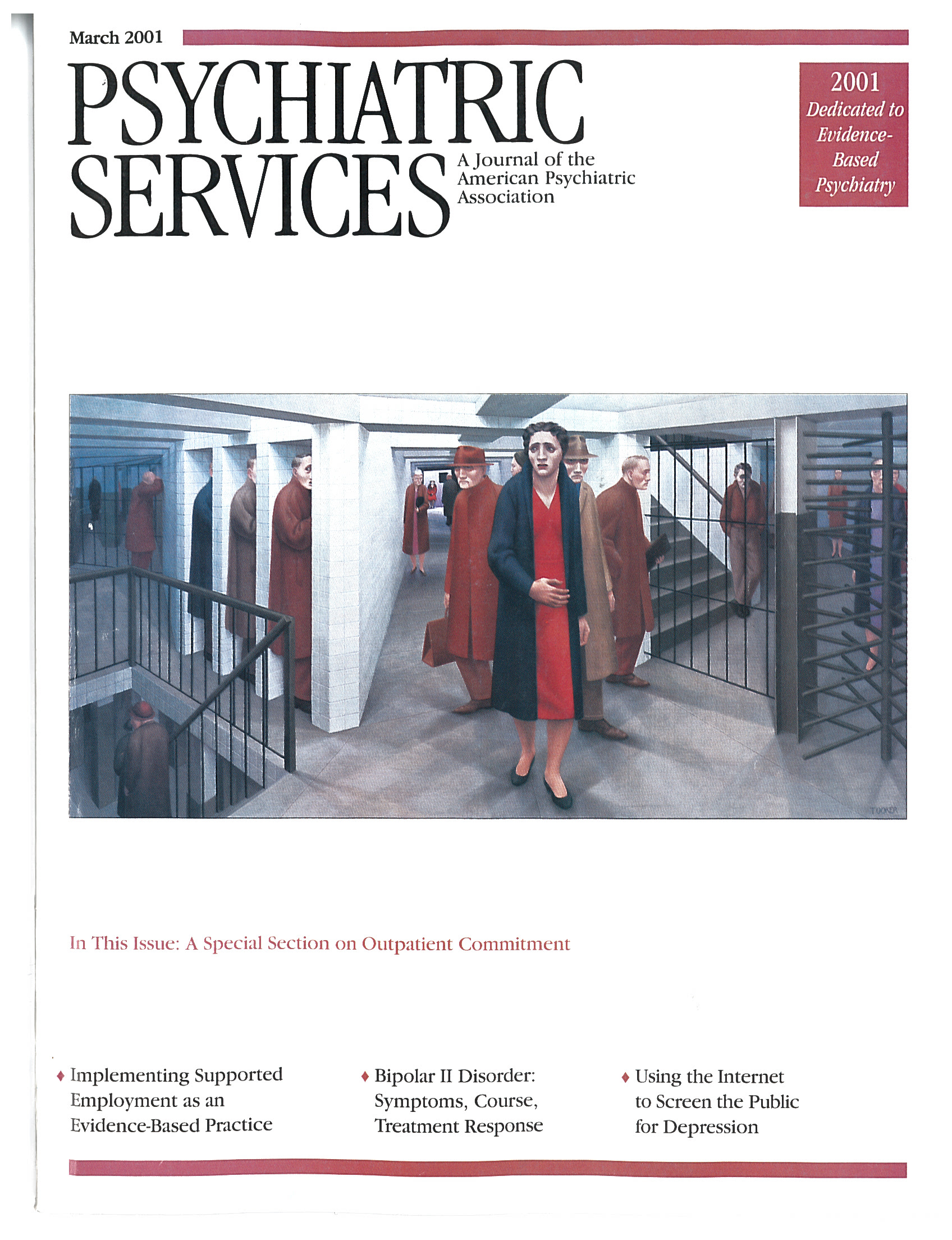The Paradox of Command Hallucinations
In Reply: We appreciate the interest in our article shown by Drs. Junginger and McGuire, who have themselves conducted informative studies of hallucinations. They appear to concur with the basic conclusion of our study—that command hallucinations to harm others are associated with elevated rates of violence.
Although this finding is consistent with clinical lore, we conducted the study because of the small number of published studies on the topic and the conflicting results of previous studies (1,2). According to the review by Hersh and Borum (1), "Clinical lore suggests that people are prone to obey their command hallucinations and that 'dangerous' commands increase the likelihood that an individual will engage in violent behavior. Empirical studies have produced more mixed results." In his review Rudnick (2) asserted that "the research and knowledge available to date on this subject is both scant and methodologically weak."
It is possible that what Drs. Junginger and McGuire perceive as a paradox in the existing literature is simply the result of few studies having been conducted on the topic, each with its own methodological limitations. Our study was intended to remedy some of these limitations, such as the use of small samples; the use of unstandardized measures of symptoms and violence; the failure to focus specifically on command hallucinations to harm others, as opposed to any command hallucinations; the failure to concurrently consider other correlates of violence, such as demographic variables and substance abuse; and the failure to assess response sets that could affect the validity of patients' self-reports.
Drs. Junginger and McGuire comment on one of our subsidiary analyses, which examined whether command hallucinations predicted violence when considered concomitantly with other psychotic symptoms. Their suggestion that we should have removed the general hallucination item from the psychotic symptoms subscale of the Psychiatric Epidemiology Research Interview (PERI) misses the point. Our goal in that analysis was to determine if the subset of hallucinations involving commands to harm others predicted violence over and above the contribution of other psychotic symptoms, including hallucinations in general.
As an empirical matter, when we conducted the regression analysis excluding the general hallucination item from the PERI, the results were no different from those originally reported in our article. Our conclusion was that the association between command hallucinations and violence occurs in the context of other positive psychotic symptoms that are also correlated with violence. These interrelated associations may indicate the existence of a syndrome that is associated with both command hallucinations and other positive psychotic symptoms, such as some types of delusions. We have recently described an aggressive cognitive style, characterized by external hostile attributions, that represents a unifying construct that could explain this relationship (3).
Drs. Junginger and McGuire hypothesize a causal connection between command hallucinations and violence. We caution that demonstration of a correlation does not prove causation. Available research suggests that violent behavior by psychotic patients results from a complex array of neurobiological, psychological, interpersonal, contextual, and socioeconomic factors, to name a few (4). It would be an oversimplification to assert that because command hallucinations represent a useful indicator of the risk of violence, they represent the cause of violence. Nevertheless, empirical demonstration of the value of command hallucinations as an indicator of violence risk has utility for the clinician, given the simplicity and ease of assessing this symptom. Comprehensive clinical evaluation of a patient's risk of violence requires consideration not only of this symptom but also of other pertinent clinical, demographic, dispositional, personal history, and situational variables (5).
The authors are affiliated with the department of psychiatry at the University of California, San Francisco, where Dr. McNiel is adjunct professor of psychology, Dr. Eisner is assistant clinical professor of psychology, and Dr. Binder is professor of psychiatry.
1. Hersh K, Borum RL: Command hallucinations, compliance, and risk assessment. Journal of the American Academy of Psychiatry and the Law 26:353-359, 1998Medline, Google Scholar
2. Rudnick A: Relation between command hallucinations and dangerous behavior. Journal of the American Academy of Psychiatry and the Law 27:252-257, 1999Google Scholar
3. Eisner JP, McNiel DE, Binder RL: Cognitive correlates of violent behavior by psychiatric patients. Paper presented at the biennial conference of the American Psychology-Law Society, Division 41 of the American Psychological Association. New Orleans, Mar 9-12, 2000Google Scholar
4. Volavka J: Neurobiology of violence. Washington, DC, American Psychiatric Press, 1995Google Scholar
5. McNiel DE, Borum R, Douglas KS, et al: Risk assessment, in Taking Psychology and Law Into the Twenty-First Century. Edited by Ogloff J. New York, Kluwer, in pressGoogle Scholar



